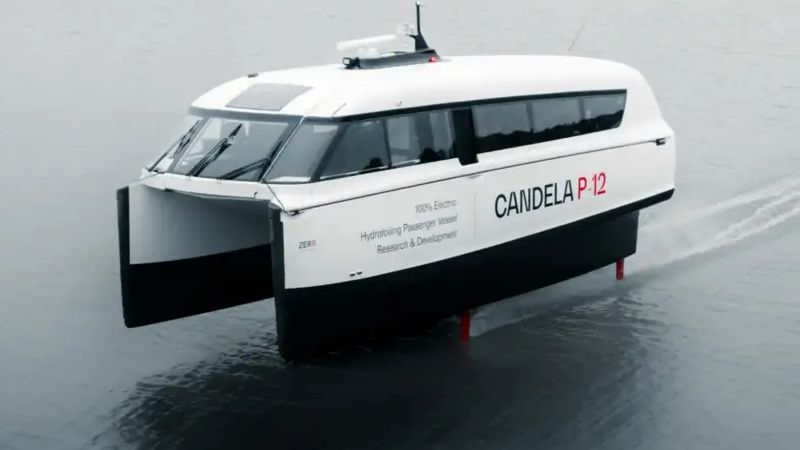Historically, water transport has lagged behind electrification, but Swedish authorities have taken an important step for the entire industry in this regard by launching commercial operation of the world’s first electric hydrofoil ferry. The Candela P-12 has a number of advantages over traditional diesel-powered river fleets.

Image source: Candela
Firstly, it is capable of carrying passengers with a significantly lower noise level, and through the use of hydrofoils, creating minimal waves. When driving within the city, this is important, since in certain sections of water routes there may be restrictions on the height of the wave generated by the vessel. Navigating these sections at cruising speeds of up to 46 km/h, the Candela P-12 ultimately spends less time navigating the canals than traditional ferries. By the way, in the surface position it can move with a wave height of up to 1 meter, and in a submerged position it can cope with wave heights of up to 2 meters. At the same time, the ship is minimally subject to rocking if it is on the surface, and this increases the comfort of passengers.
The Candela P-12 can carry up to 30 people and some luggage, depending on the cabin configuration. A single crew member can control the ship. The total carrying capacity of the ferry reaches 3000 kg, and the total weight is 10,000 kg. The vessel is equipped with four blocks of traction batteries with a capacity of 63 kWh, the energy reserves of which are sufficient for 74 km of travel. The steam can be charged from a DC station with a power of up to 175 kW. It takes 45 minutes of charging to increase the charge from 10 to 85%. From this point of view, operating a ferry in the capital of Sweden on a 15 km route does not cause any inconvenience compared to its diesel counterpart. Moreover, the cost of transporting one passenger becomes ten times more profitable, not to mention the obvious environmental benefits of switching to electric traction. Saudi Arabia, New Zealand and Germany are planning to purchase such Candela ferries in the future.